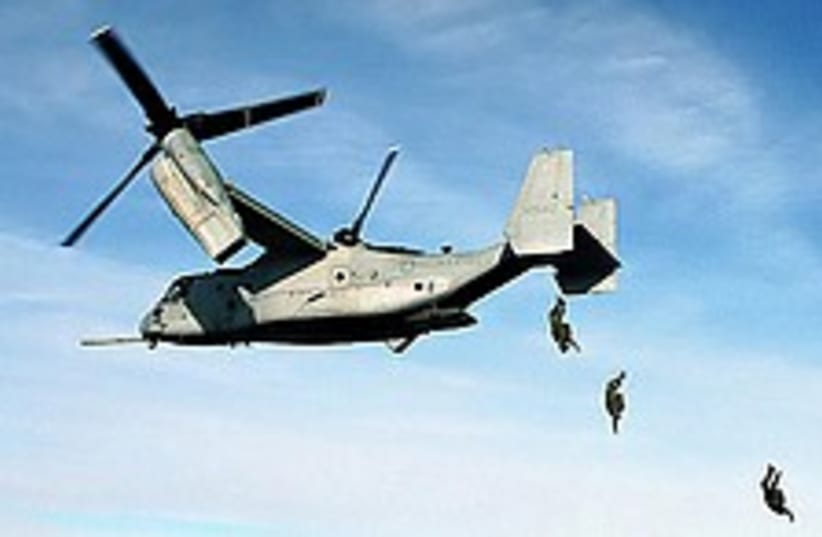IAF has eye on combo plane & chopper
V-22 Osprey is a tiltrotor short takeoff and landing aircraft used to ferry troops deep behind enemy lines.
It can take off like a helicopter, fly like a plane and then land however it wants, and it may soon be in the hands of the Israel Air Force.
It is called the V-22 Osprey and is a tiltrotor vertical/short takeoff and landing (VSTOL) multi-mission aircraft developed to ferry soldiers, and particularly Special Forces, deep behind enemy lines.
The aircraft is manufactured by Boeing and Bell Helicopter; it entered operational service in April 2007. Since then it has reportedly flown over 2,000 flight hours and is used primarily for cargo and troop movements, as well as some riskier reconnaissance missions.
Israel has been closely following the development of the aircraft; a few weeks ago Maj.-Gen. Benny Gantz, the IDF's military attaché to Washington, together with senior IAF commanders, visited the Boeing plant where it is manufactured. Senior officers said the aircraft could meet Israel's future needs, particularly in transporting Special Forces behind enemy lines.
"It is an agile large aircraft that can fly at top speeds and stands a much better chance at evading air defense missiles than a regular transport helicopter," a defense official said, adding that the aircraft appeared to meet new IAF operational requirements culler from the Second Lebanon War. The aircraft costs an estimated $70 million.
What makes the V-22 unique is its ability to takeoff vertically like a helicopter, with its rotors in an upright position, and then to shift the rotors 45 degrees downwards, allowing it to fly like a regular transport plane, reaching speeds of up to 300 knots, almost double that of a helicopter.
Israel is looking at the aircraft as a potential replacement for its aging fleet of Yasour transport helicopters. The V-22 can transport 24 combat troops, or more than 9,000 kilograms of internal or external cargo, and has a range of more than 4,000 kilometers with a single aerial refueling.
if(catID != 151){
var cont = `Take Israel home with the new
Jerusalem Post Store
Shop now >>
`;
document.getElementById("linkPremium").innerHTML = cont;
var divWithLink = document.getElementById("premium-link");
if(divWithLink !== null && divWithLink !== 'undefined')
{
divWithLink.style.border = "solid 1px #cb0f3e";
divWithLink.style.textAlign = "center";
divWithLink.style.marginBottom = "40px";
divWithLink.style.marginTop = "40px";
divWithLink.style.width = "728px";
divWithLink.style.backgroundColor = "#3c4860";
divWithLink.style.color = "#ffffff";
}
}
(function (v, i){
});

